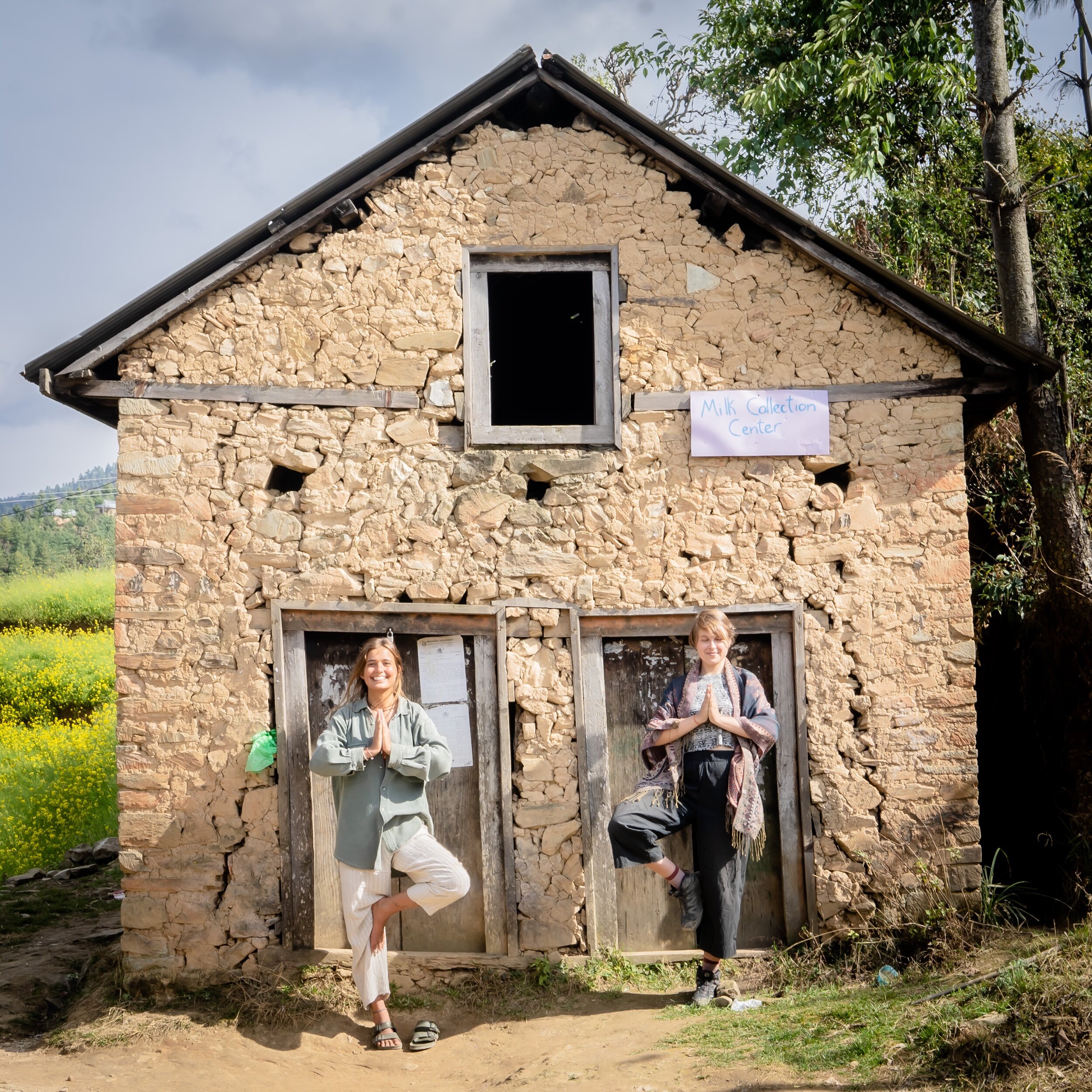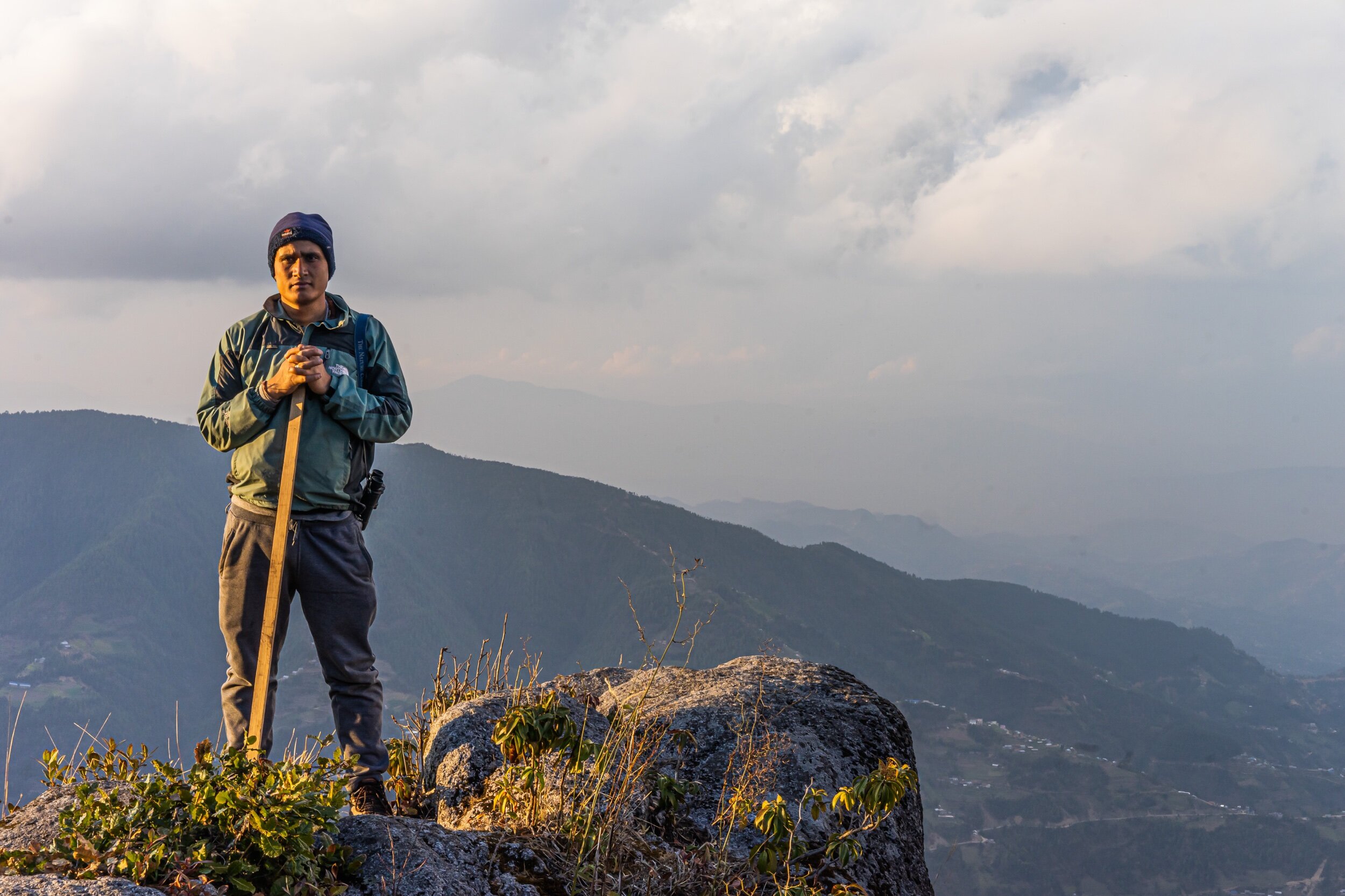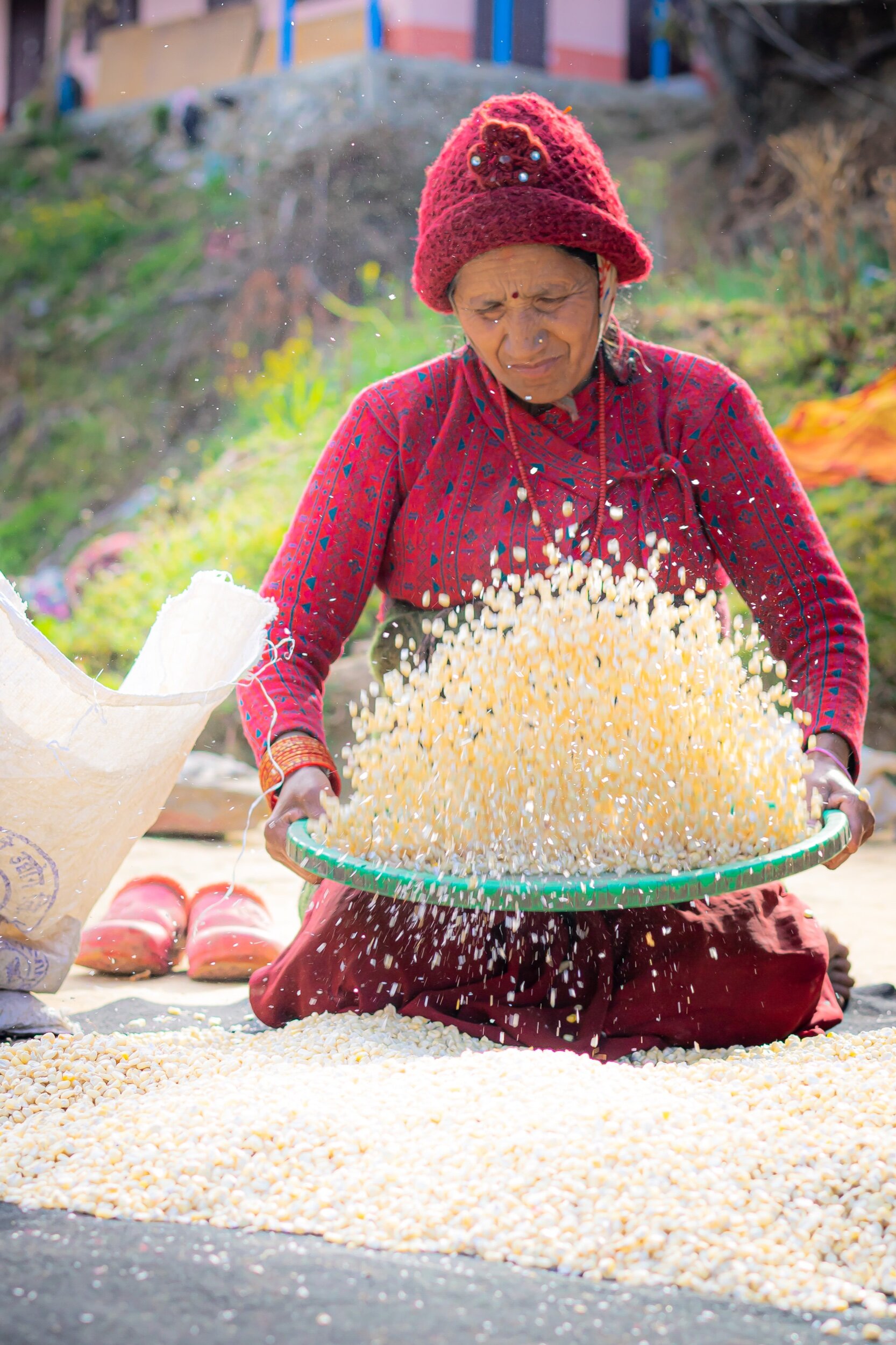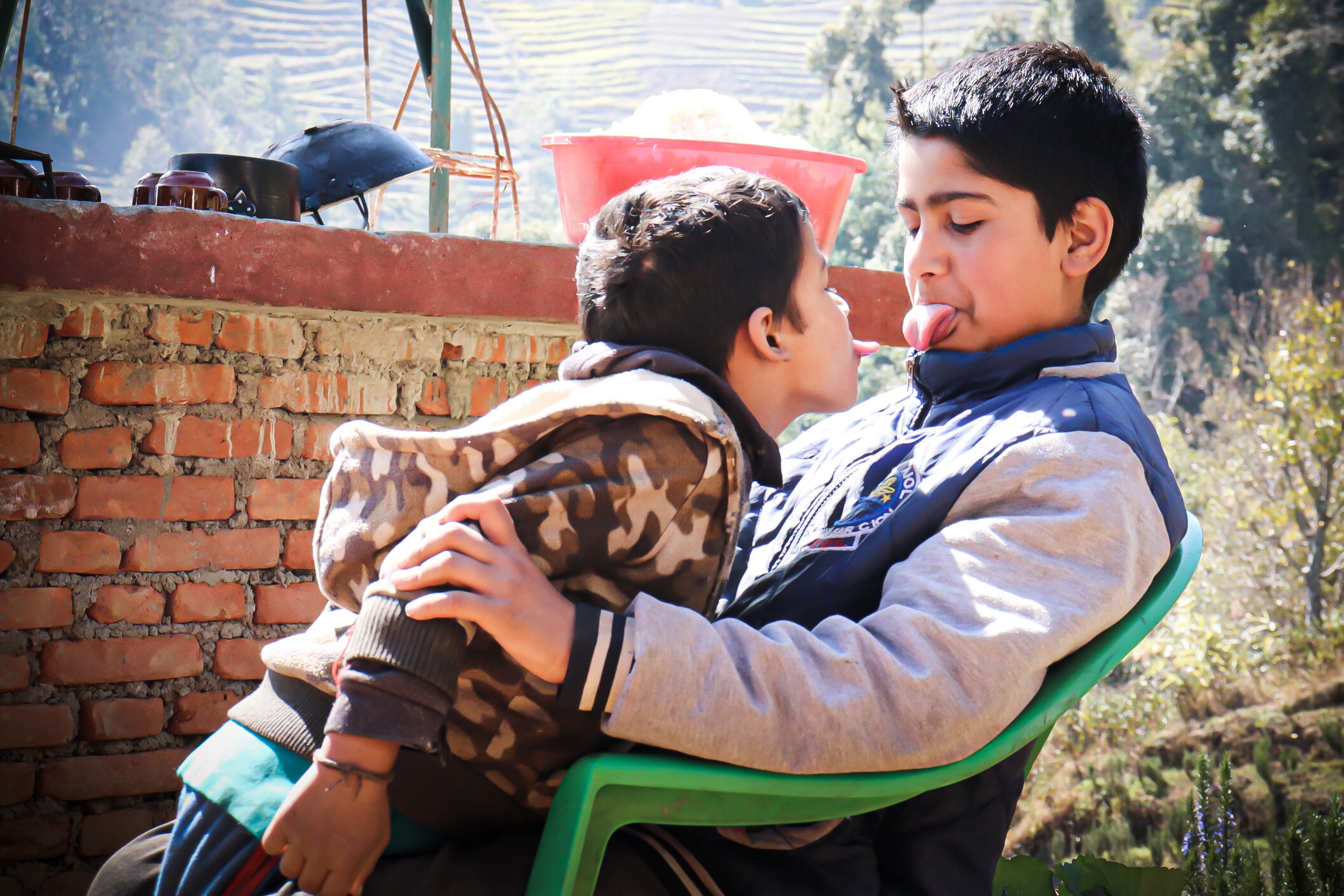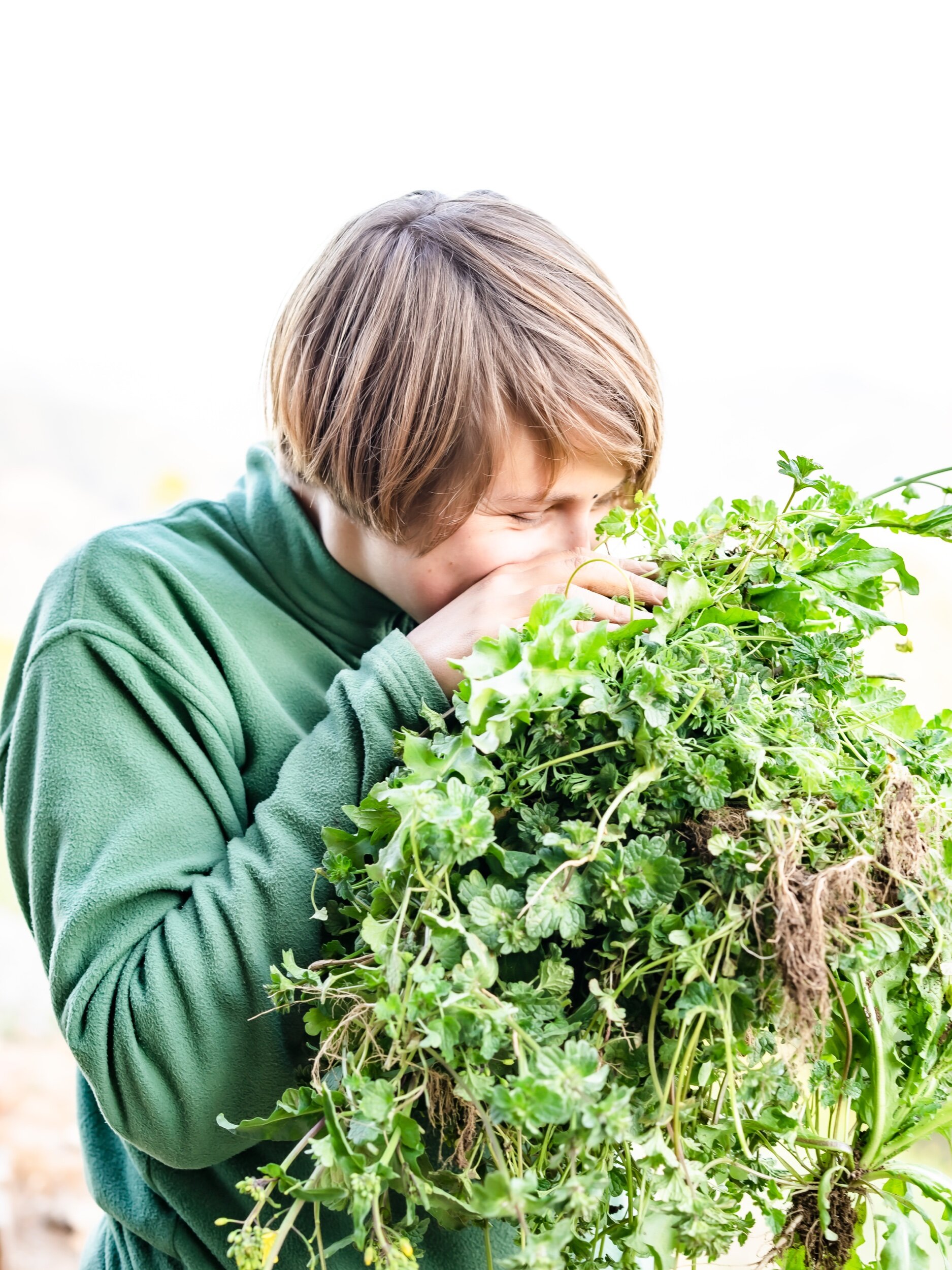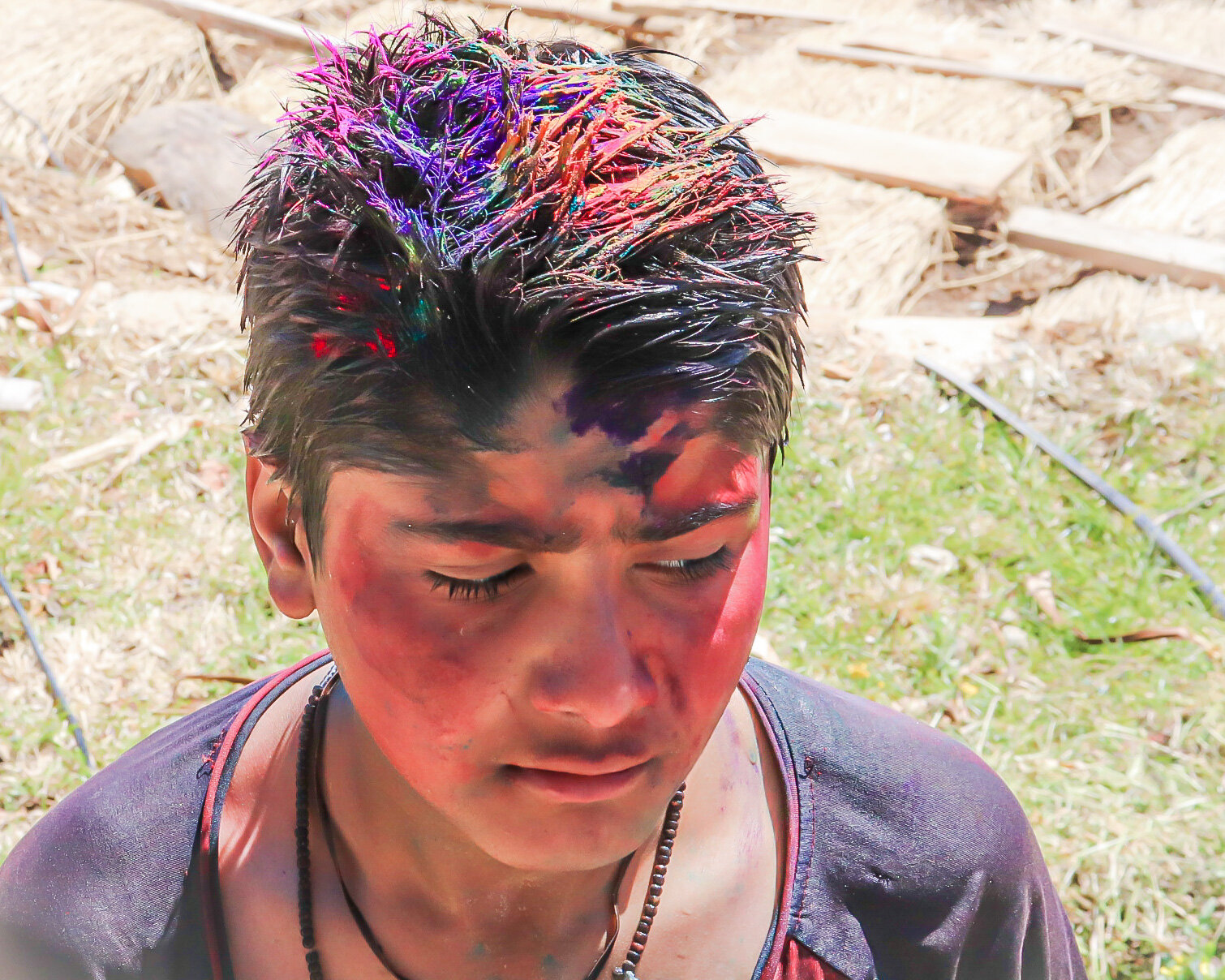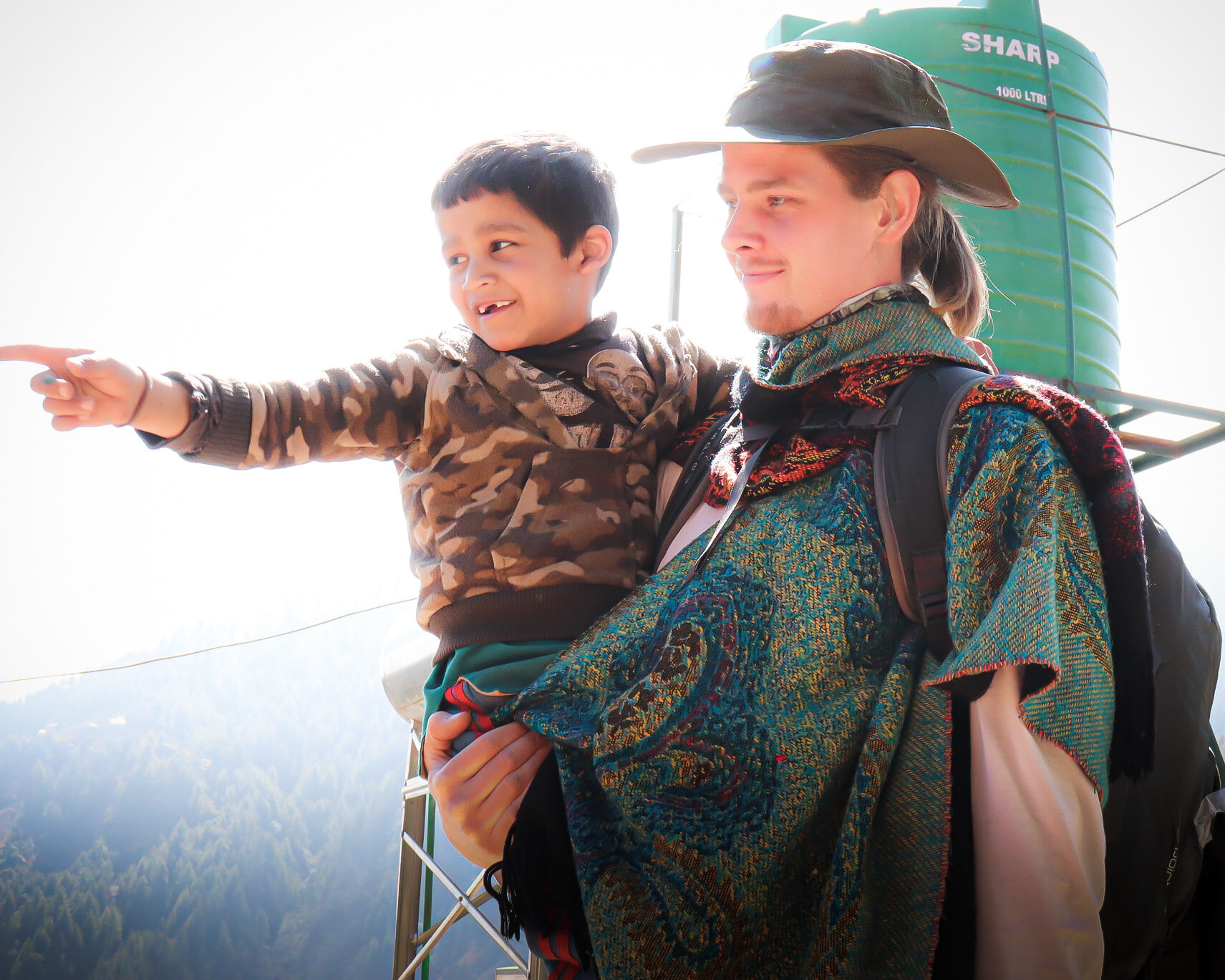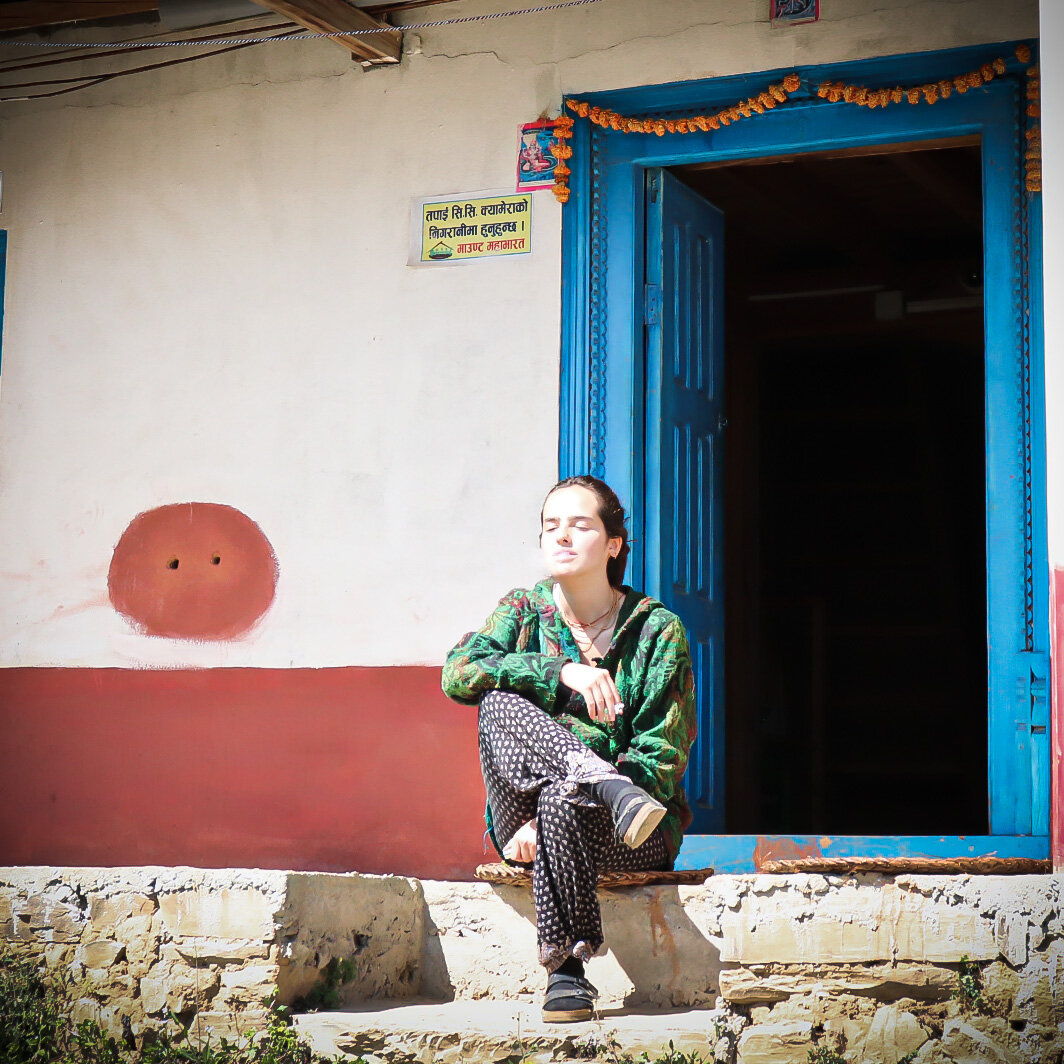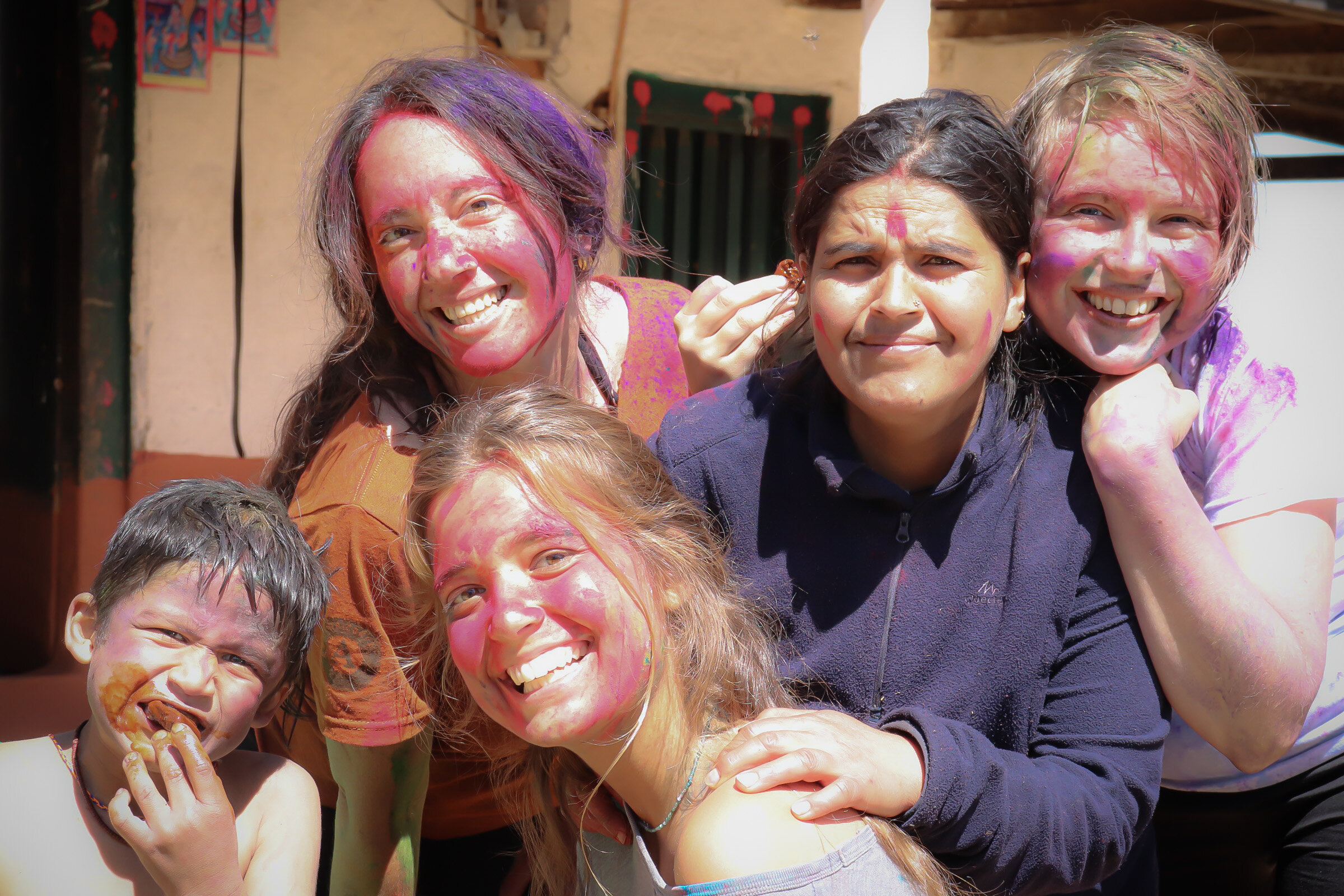I left Mount Mahabharat feeling melancholy. The deepening impacts of the global crisis were becoming more manifest each day. At one point there were restrictions on entry flights from certain countries. Not soon after, Nepal had announced the complete closure of international flights. Our daily yoga and meditation programs became even more important as uncertainty mounted. We had a particularly moving morning of spontaneous kirtan that lifted everyone’s moods beautifully... but later people would return to their phones and the news of the world, and the realities of each of our own home countries, as well as watching Nepal start to respond to the crisis: the closing of schools, bars, gatherings... the first round of restrictions on international flights to selected countries.
Leaving felt more somber than joyous; even though I had been very much looking forward to trekking, as things locked down more and more, it felt like I was walking out of my safe haven into an unknown world.
One of the big trucks so common throughout Nepal, at the Dhunkharka Bazaar
We took the bus, our small group leaving the sweet and safe homestay, and upon arriving to Kathmandu Teresa departed; Paloma came with me to my hotel check in but then left to take a room at a nearby hostel. Then I walked up to meet my guide Kavee to get some gear for my trip and talk about our itinerary. Luckily, Kavee had already taken care of all my permits before the government had closed down issuing the TIMS cards (this is the permits required for tourists). This, he literally did in the last hour before it was shut down.
First he took me to a medical center. I was to get a doctor’s clearance... just in case. Before I entered the building they took my temperature. Then I was led inside and answered a few questions to the doctor as to how long I had been in Nepal, any problems I felt, etc. They took blood pressure, listened to my heart and lungs. 300 rupees later (less than $3), I had a note of good health.
Kavee took me around to a few gear shops that were his favorites to pick up stuff I didn’t have: a sleeping bag, backpack, new headlamp, hiking poles. Then we sat down for tea to look over the itinerary. He said if I wanted to leave a day early, it might be better. At that point, I thought, nah, let’s just stick with the original plan. I wanted a rest day, a chance to do laundry, to be by myself, eat a couple of good meals that weren’t dal baht, before moving on.
However, when I went to dinner that night, a friend of mine who works in the tourism sector found the latest news that the lockdown was going to be enforced more strictly and that public buses would soon be restricted. I texted Kavee at 8:30 pm to see if he could still be ready to get on a bus to Pokhara, the start of the Annapurna Circuit, the next morning at 7. No problem, he said. I sent my bus details.
The next morning he was already on the same bus I was signed up for, waiting for me. The route was slow, bumpy, heavily trafficked, beautiful, following the Trisuli River and opening up views of the mountain ranges to the north.
Over dinner we poured over maps and talked about routes. By this point, all of my previously carefully thought-out plans had gone out the window. I wouldn’t even try to get up to the Three Passes Trek in the Everest region right now because transport was too uncertain; now I wished to spend about 20 days trekking in the Annapurna region. He talked about taking me up to the North Annapurna Base Camp, an off the beaten route that requires camping for several days, and then on the route over Tilcho Pass to Tilcho Lake, down towards Manang, and then back up and over Thorong La pass to Muktinath, a well-regarded Hindi pilgrimage site. There were several caves and other spiritual temples along the way he would show me. If there was time and the snow level allowed for it we would also head up to the Dhaulagiri Base Camps.
My guide, Kave Sharma, meditates at a lookout point with his favorite mountain, Dhaulagiri, behind him.
Kavee’s speciality is as a mystic guide; he is a devotional Bhakti yogi; he leads people to special pilgrimage places, and encourages his clients to set some sort of intention as they come into the mountains. Mine is simply to know myself and understand my dharma path better through the meditation that walking mountainous paths gives me. My mind becomes clear and lifted, as I strengthen my body, take in the beauty of the nature; find challenges that are both mental and physical, and find myself closer to the world around me. I like quiet, off the beaten path places; I like high places and high passes, and dont mind a certain amount of discomfort in the form of steep ascents and descents, cold, rain and snow; I like walking for many hours in the day and just losing myself in the consistent motion and the subtle observation of everything around me.
Our decision was to leave our hotels at 4am, to be at the trailhead around 6 to start walking. Even though the lockdown was not in full effect yet, and I had a valid permit and a doctor’s note, he still had some worries that the tourist police would not allow us to enter. While this seemed extreme, I figured he knew how the country worked better than I did, so I went along with it.
After pulling enough cash in rupees to last the next 20 days I went back to pack. Packing for a 20 day trek felt so good... it brought me back to my days at Sequoia-Kings, looking over gear, deciding what should be organized together, how the backpack will be best distributed, paring down items to the bare necessities.
It was late when I went to bed, and I knew I would hardly sleep, but there was so much excitement as I was ready to be immersed in the mountains for so many days, leaving behind the stress, fear-mongering, confusion, and get my head calmed by the peaks and passes, lakes and streams, the wilderness, the feel of the open space touching softly upon my face and my heart, the feel of each footstep, the meditation on the breath and the muscles working together, the long and spacious quiet.
